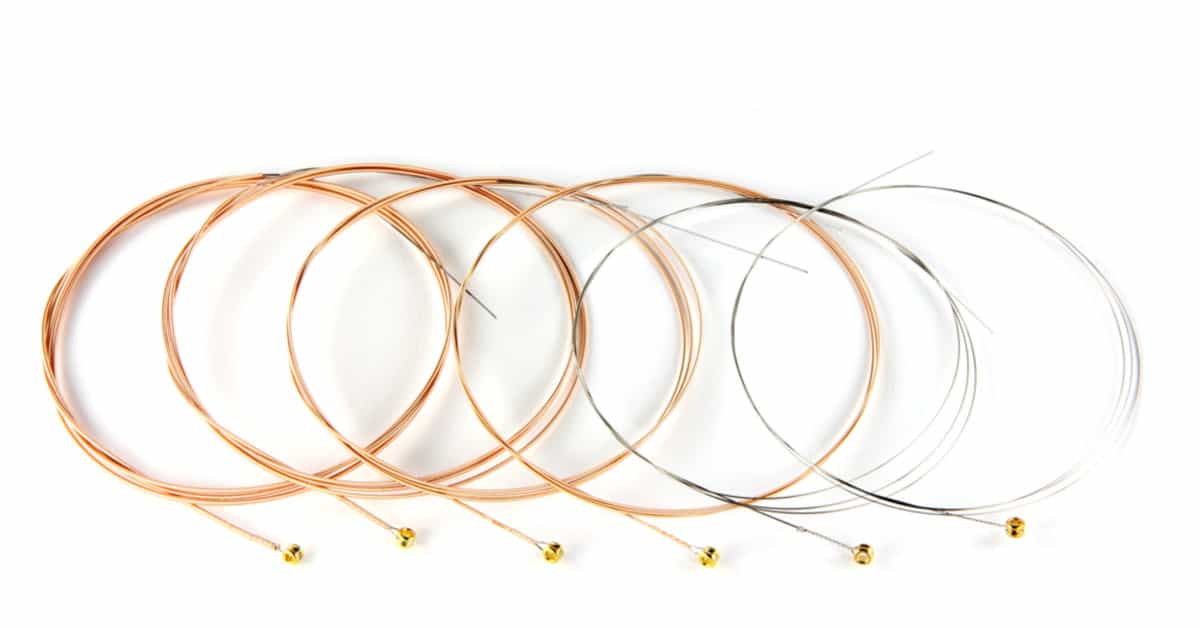There are a variety of acoustic guitar different pickup styles available but not all pickups work with nylon string guitars.
Different pickups use different technologies, and some only respond to steel strings, whereas others respond to both steel and nylon strings.
In this article, we will explore the different methods of amplifying a nylon-string acoustic guitar and the pros and cons of each.
Best Way To Amplify a Nylon String Guitar
The best way to capture the tonal richness of your nylon string guitar is using a microphone.
So if you are looking to capture your nylon-string guitar in a recording situation, then microphones placed in front of your nylon string guitar are your best bet.
However, if you are planning to play on stage, with other people, then a microphone will not be suitable.
If there are other instruments making other noises in the same space, sonically and tonally they will overshadow the gentle tones of a nylon string acoustic guitar.
If you are performing solo, then this interference is not an issue and you are advised to try and use microphones, however, if you are playing with others, and need amplification, then you will need to invest in a pickup.
Different Types Of Acoustic Guitar Pickup
Soundhole Pickup
Soundhole pickups are the most convenient and least intrusive pickups you can get for acoustic guitars. You don’t need to drill, glue or screw anything.
They just slot into the soundhole area of your guitar, and you can unclip them where when you don’t need amplification anymore.
Unfortunately, most soundhole pickups use magnets to react to the strings being vibrated to capture and transmit the sound.
So if your strings are nylon (instead of steel), the soundhole pickup will not detect the vibrations of the strings in the same way.
As a result, soundhole pickups are not suitable for nylon string guitars, because of their magnetic vibration detection mechanism.
Undersaddle Transducer
Undersaddle transducers are different in both the location they are placed and the way in which they detected string vibrations and transmit that signal.
As the name suggests, these pickups are placed on the underside of the saddle.
This position is still close to the soundhole, so they have good exposure to the vibrations being made by the strings, but aren’t too influenced by the other vibrations from the body of the instrument.
Instead of using a magnetic field to detect the movement of steel strings, these pickups use compressed crystal which is sensitive to vibrations, which sense the vibrations in the air caused by the strings and converts those vibrations to a voltage which is then transmitted through to the amplifier.
These provide a very reliable, but not the most tonally rich sound.
These pickups are often referred to as piezo, or piezoelectric pickups. Piezo is a term that describes the conversion of mechanical energy (string vibration) into electrical energy, and it does this using the crystal.
Soundboard Transducer
Soundboard transducers work in the same way as an under-saddle transducer (using a crystal to detect vibrations and convert that to a voltage signal) except they are placed in a different location.
These pickups are attached to the soundboard itself meaning they do pick up more of the vibration of the wood itself, rather than just the string vibration.
Best Way To Amplify a Nylon String Guitar
The best way to amplify your nylon string guitar is with a microphone, but if this is not suitable (playing with others) then a pickup will be the next best option.
Given soundhole pickups are magnetic, we cannot use those so you will need to use either an under-saddle piezo pickup or a soundboard transducer to amplify a nylon string guitar.
The under-saddle transducers are by far the most commonly used, and most prevalent in the shops, but you can experiment with a soundboard transducer as well if you want.
Are Different Types of Pickups Better for Nylon Strings?
You must use a piezoelectric pickup if you want to amplify a nylon string guitar as nylon string guitars do not work with magnetic pickup (which detect vibrations from metal strings).
What Are Some Pickups I Could Use For My Nylon String Guitar?
Depending on how much you want to spend, pickups can be purchased for less than $100 up to over $1000 dollars.
Different brands have their own approach to design which impacts tonality, so it can be really useful to look at a few youtube videos of different models, and how they sound.
LR Baggs Element Active Undersaddle
Seymour Duncan Wavelength Solo Nylong Guitar String Pickup
Fishman SBT Classical Guitar Soundboard Transducer Pickup
https://www.amazon.com/Fishman-Classical-Guitar-Soundboard-Transducer/dp/B0002D06YU
What Are The Best Equalizer Settings When I Am Amplifying a Nylon String Guitar?
The easiest overall equalizer settings for your nylon guitar string pickup are to leave your mids and your highs a the middle ’12 o’clock’ setting, and then back the bass off slightly.
This will reduce any extra vibration and let your mids shine through.
The key principle to keep in mind when dialling in your nylon string guitar is to let those gorgeous mids shine through as that is what stands out from these lovely sounding instruments.

